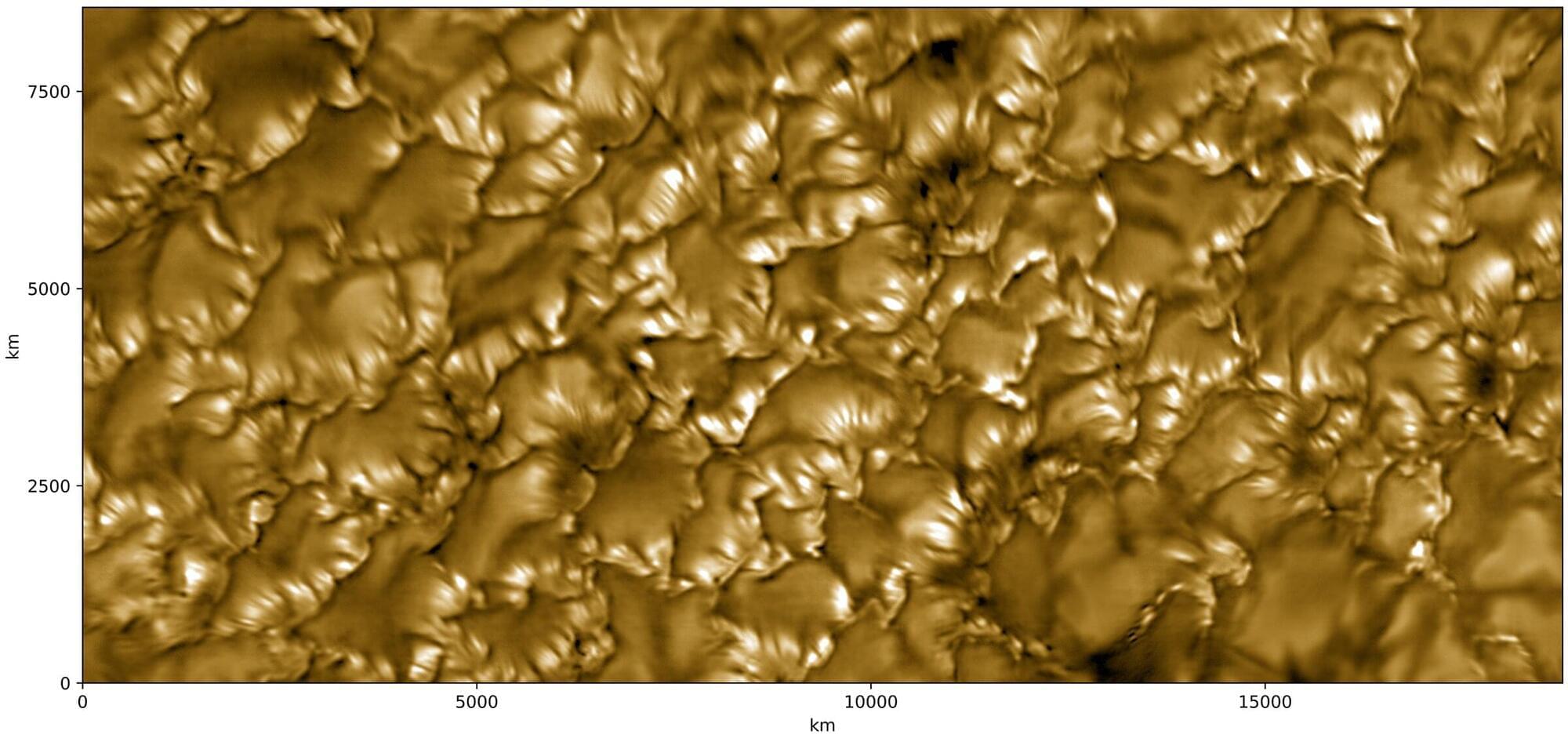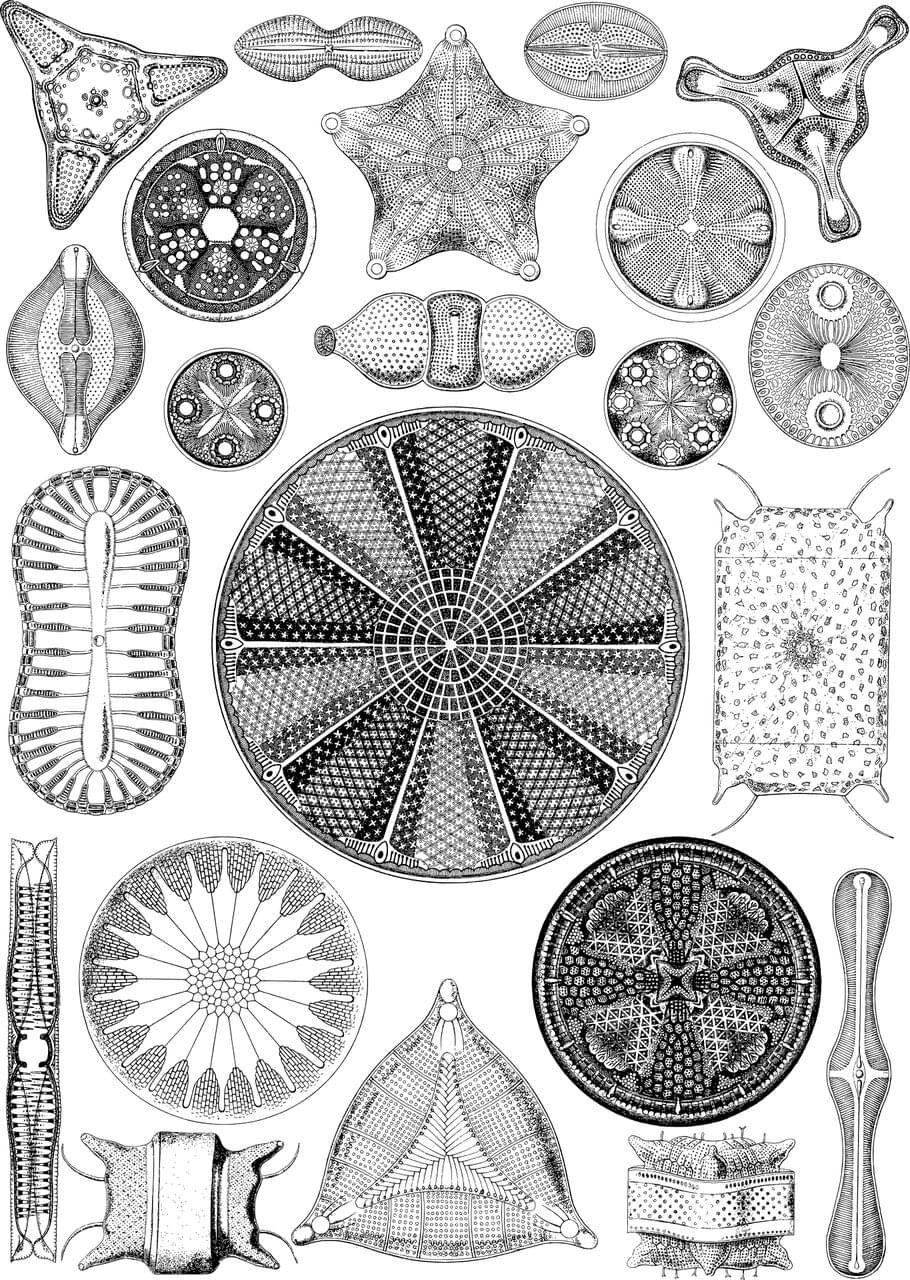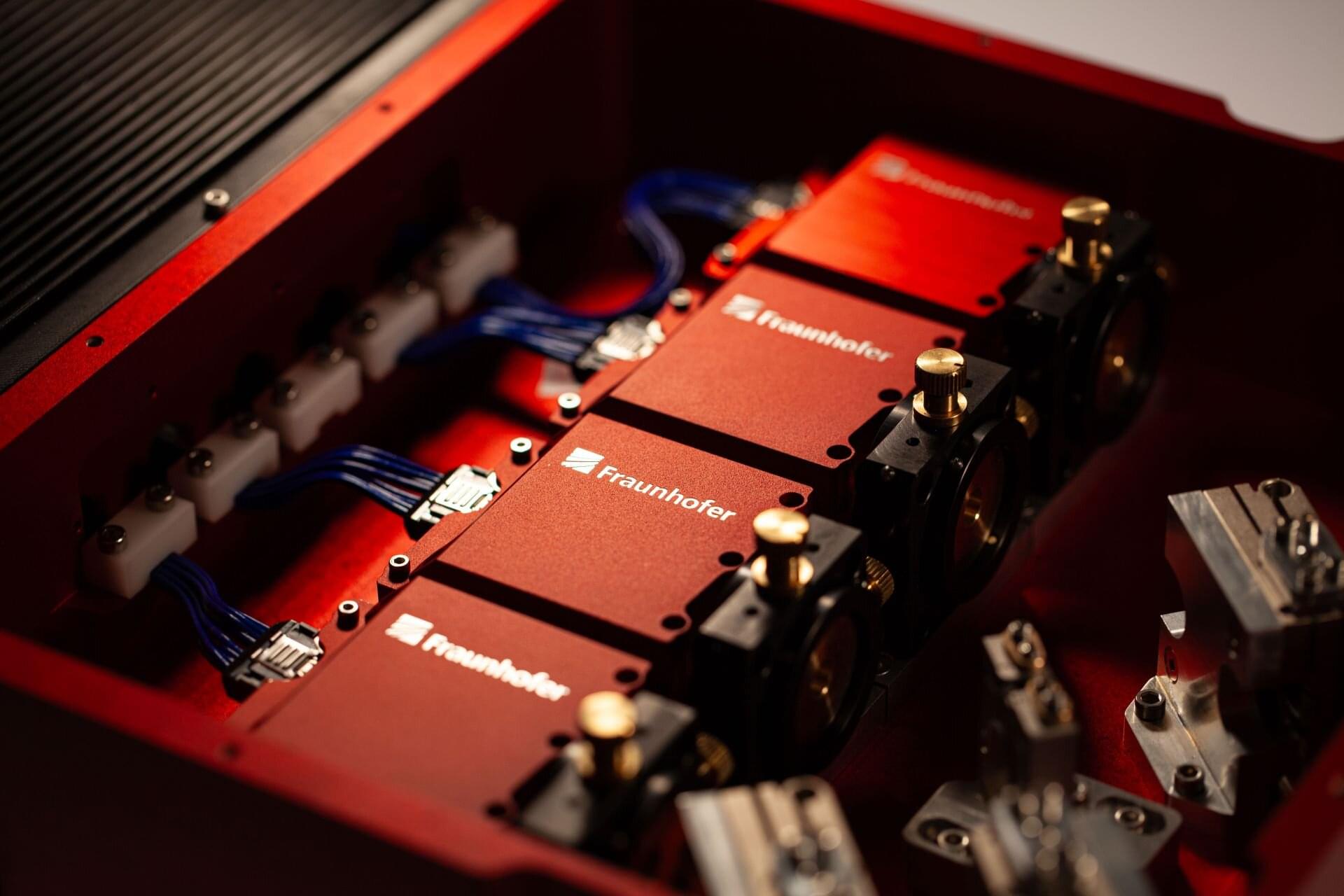A team of solar physicists has released a new study shedding light on the fine-scale structure of the sun’s surface. Using the unparalleled power of the Daniel K. Inouye Solar Telescope, built and operated by the National Solar Observatory (NSO) on Maui, scientists have observed, for the first time ever in such high detail, ultra-narrow bright and dark stripes on the solar photosphere, offering unprecedented insight into how magnetic fields shape solar surface dynamics at scales as small as 20 kilometers (or 12.4 miles).
The level of detail achieved allows us to clearly link these stripes to the ones we see in state-of-the-art simulations—so we can better understand their nature. These stripes, called striations and seen against the walls of solar convection cells known as granules, are the result of curtain-like sheets of magnetic fields that ripple and shift like fabric blowing in the wind.
As light from the hot granule walls passes through these magnetic “curtains,” the interaction produces a pattern of alternating brightness and darkness that traces variations in the underlying magnetic field. If the field is weaker in the curtain than in its surroundings, it appears dark; if it is relatively stronger, it appears bright.









